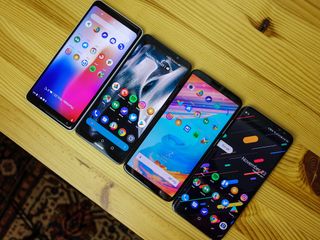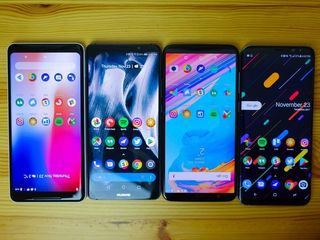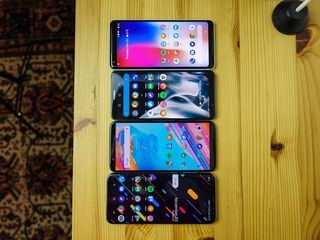This year, I'm thankful there are no more bad phones

When I got back from the OnePlus 5T launch event last week, I sat down with the phone and played with it, and it was clearly very good. I was justifiably impressed with the quality of the hardware and the smoothness of the software — more so when I considered its relatively affordable $499 price tag. OnePlus is a company that understands its market, and though it's buttressing up against that all-important $500 benchmark, it's probably more comfortable being there — being compared to the Galaxys and iPhones of the world — than stuck in the $299 bracket fighting over entry-level scraps.
But it occurred to me that there are no more bad phones at any price. Leaving aside the truly dreadful, no-name stuff, you can find happy customers of the $50 BLU Advance A5 all the way up to the $950 Galaxy Note 8. Never before have we been so awash in mobile bounty.

This trend is reinforced by the increasingly minute differences we're seeing in devices. While rising component costs are pushing flagship handset prices into the $1000 range, we're seeing less diversity in design and component choices at each price tier. We can pretty much take for granted how a phone at $200, $500, and $1000 will both look and perform; we can reasonably expect certain benchmarks to be hit (not, like, speed benchmarks but actual qualities). I'm not saying every phone looks the same, performs identically, and aspires to do the same thing, but we're at a point where, if a phone runs Android, it generally runs it pretty well, and looks pretty OK.
The next few years will be interesting from an Android perspective. We're seeing phone design being distilled to a reproducible formula: big, bezel-less screen; powerful chip; high-speed cellular modem; great camera; big batteries. Increasingly, all of those tenets can be achieved in the entry and mid pricing tiers — just look at the new Honor 7X and aforementioned OnePlus 5T, respectively — with camera quality being the only remaining outlier.
We're now at a point where, if a phone runs Android, it generally performs well and looks pretty good.
With phone screens going edge to edge, most companies' distinctive design elements are moving to sides and back, but even then it's more a matter of preference than optimization. Do you prefer the cameras centered or to the side; do you prefer the fingerprint sensor in the middle, or wherever the hell Samsung thinks makes sense? And as with all technologies — see laptops, televisions, even cars — the components and capabilities once reserved for the wealthy are increasingly available to everybody.
Qualcomm's collection of Snapdragon platform chips perhaps showcases this the best; there used to be a substantive difference in experience between the dregs of the 200- and 400- series, the constrained-but-capable 600-series, and the thermal- and performance-pushing 800-series. Now, in many cases, it's difficult to tell the difference.

It also used to be that cheap phones felt, well, cheap. With companies like Motorola, Honor, HTC and others replacing low-quality plastic with the same metal and glass as their flagship peers, that's no longer the case, either. To my eyes and hands, there's little difference between the $399 Moto X4 and the $649 HTC U11 — both are beautiful and impeccably built.
Be an expert in 5 minutes
Get the latest news from Android Central, your trusted companion in the world of Android
So the next time someone suggests that smartphones are getting boring because they are all starting look and feel the same, turn the argument around: it's tremendously exciting that it's pretty hard to buy a bad phone these days, and that the differences between a $50 and $950 device, while still enormous, are narrowing every year.
Happy Thanksgiving 🦃
Daniel Bader was a former Android Central Editor-in-Chief and Executive Editor for iMore and Windows Central.

